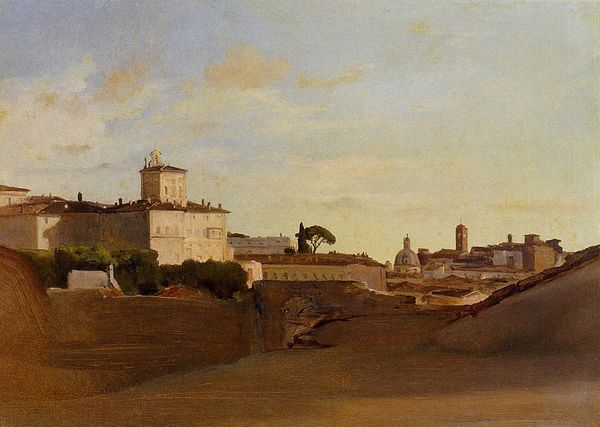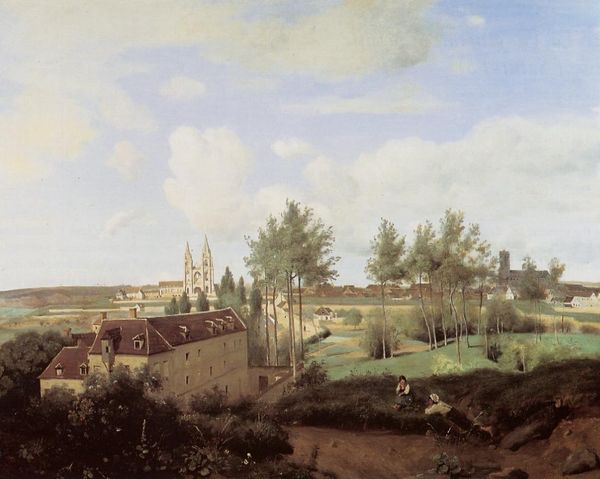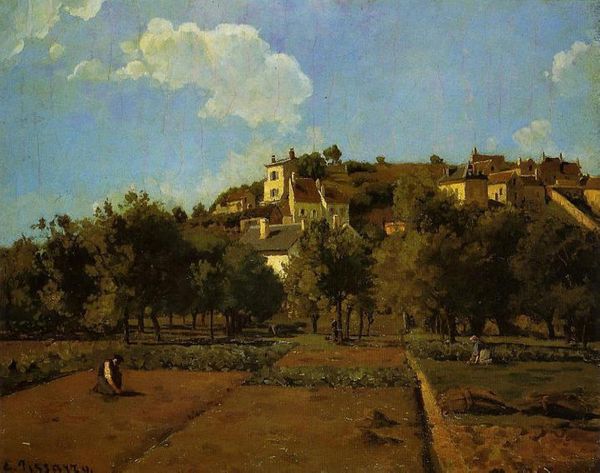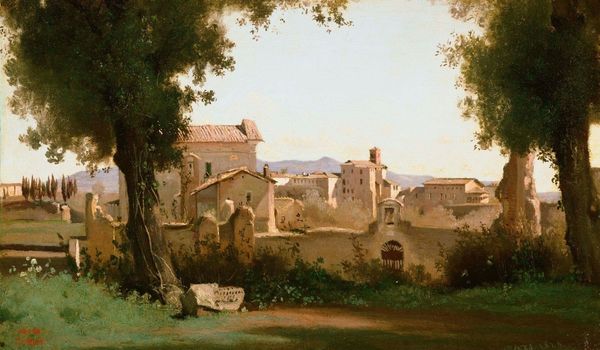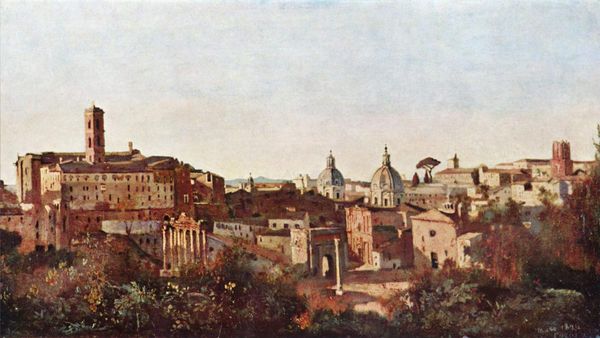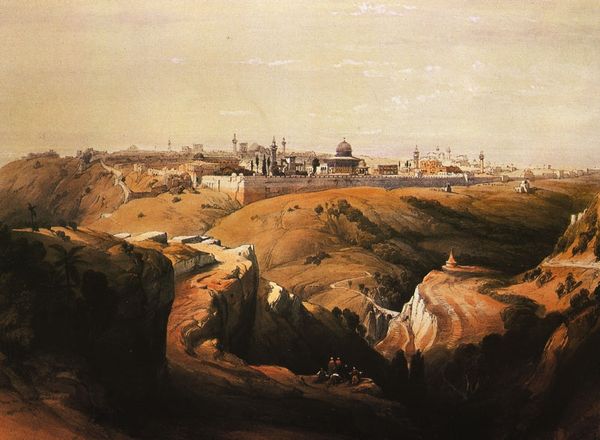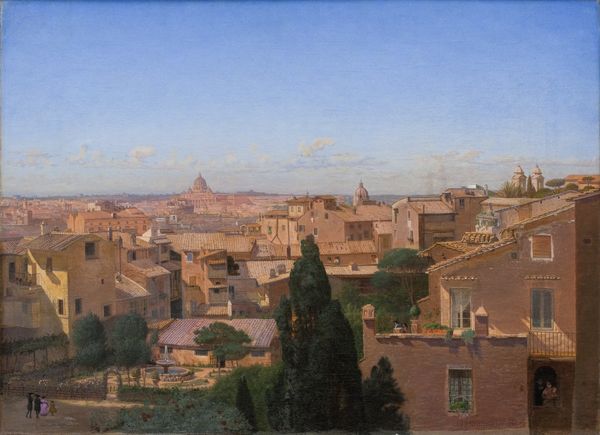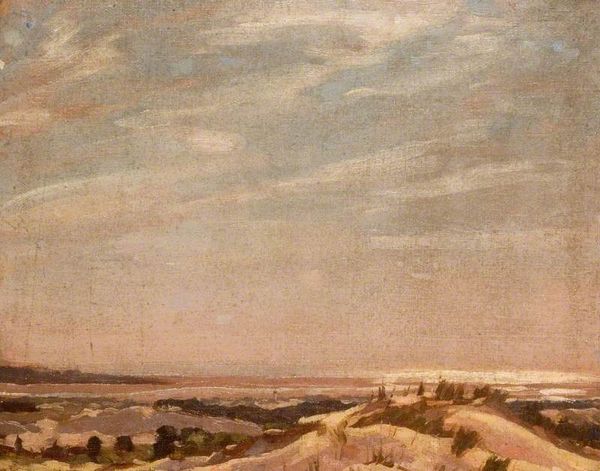
painting, plein-air, oil-paint
#
sky
#
painting
#
plein-air
#
oil-paint
#
landscape
#
oil painting
#
romanticism
#
cityscape
#
building
Dimensions: 45 x 74 cm
Copyright: Public domain
Curator: Immediately striking. There's a serene clarity to the composition, a structured approach even in this seemingly pastoral scene. The color palette, while muted, provides a great interplay between light and shadow. Editor: We're looking at "Trinita dei Monti from the Villa Medici," painted in 1834 by Camille Corot. It’s an oil on canvas, demonstrating his engagement with plein-air painting during his time in Italy. Curator: Yes, the atmospheric perspective creates depth. Note the geometry of the buildings—cubes, cylinders—and how they’re softened by Corot’s loose brushwork. He builds form with light. Editor: Absolutely, and it’s essential to view this piece within the context of Corot's artistic development. This view, rendered from the Villa Medici, offered a prestigious vantage point from which to depict Rome. Consider that plein-air wasn't just about capturing the 'scene'—it was tied to notions of authenticity, and of experiencing art within broader sociopolitical debates. Curator: His commitment to capturing visual sensations gives this work authenticity. It is clear in the gradations in light; his willingness to present that and almost abandon clarity provides us an insightful way to explore visual structures of pictorial language. Editor: It reflects the period's growing interest in unadulterated artistic observation, especially regarding Romanticism. These Roman views served not just as exercises for the artist but also as visual documentation for the increasingly popular tourist market. The light in this particular view reflects how Corot, even at an early stage, sought an approach that favored subtle observations over grandiose aesthetics. Curator: True. We also appreciate the horizontal orientation, lending itself towards spatial explorations by structuring various forms in terms of scale. Corot is using a formal vocabulary to explore this vista. Editor: His gaze, so perfectly embodied in this cityscape, presents us with not just what Rome looked like but the experiences and political and cultural climate of the moment as he experienced it. Curator: The painting provides an intriguing analysis of what happens when a structured style interprets an unencumbered reality. It serves to enrich our perception. Editor: Ultimately, Corot offers us a glimpse into 19th-century Rome—as seen by an artist grappling with new ways to observe and interpret the world.
Comments
No comments
Be the first to comment and join the conversation on the ultimate creative platform.
